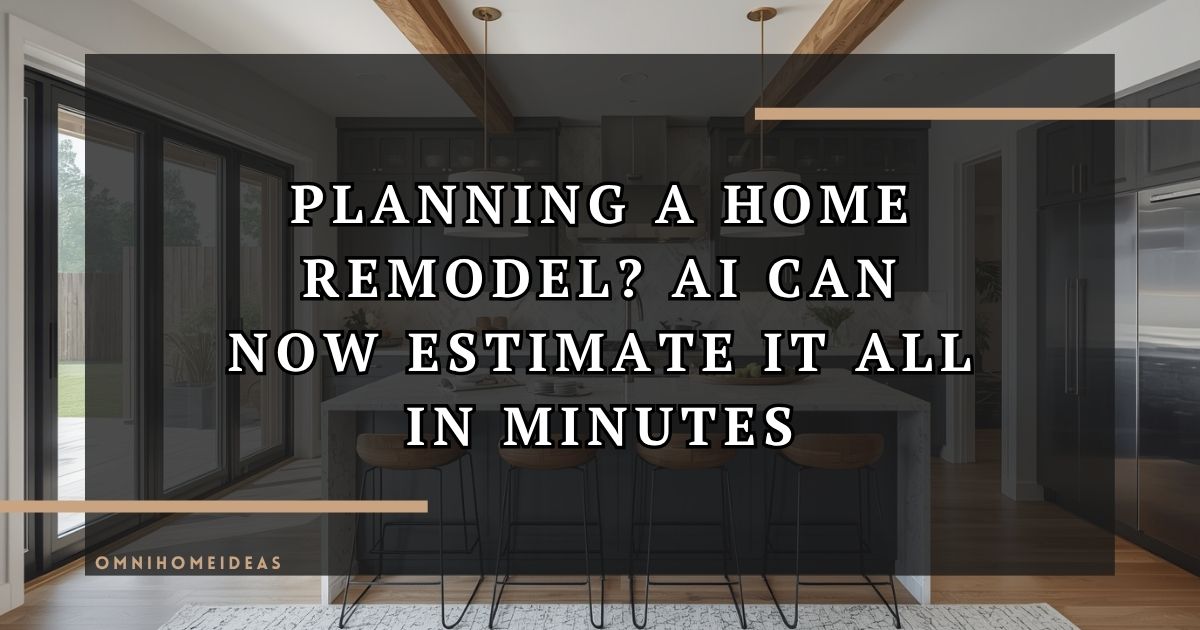Construction isn’t just evolving—your home‑renovation workflow is sprinting too. Projects are getting more ambitious, timelines tighter, and budgets more scrutinised. Whether you’re a homeowner planning a kitchen overhaul or an interior designer coordinating remodels, manual take‑offs (that is: counting materials, measuring surfaces, estimating costs by hand) can slow things down.
Enter the era of AI takeoff software. These weren’t just built for large commercial contractors. Today, a growing number of tools are tailored for residential remodels. They help you estimate faster, bid smarter (even if you’re your own general contractor), and keep stress in check.

The pain points driving adoption
Before we explore the trends, let’s acknowledge the issues pushing homeowners and design teams toward AI:
- Manual take‑offs eat up hours or even days—reducing how many projects you can plan.
- Plan revisions (changed drawings, addenda) force you to redo the same work repeatedly.
- Skilled estimators or remodel‑coordinators are harder to hire or retain.
- Inconsistent accuracy in manual methods risks budget overruns or nasty surprises during the remodel.
- Without some form of automation you may struggle to keep up with ambitious design timelines and cost expectations.
Key trends in AI take‑off tools for home renovation
Here are the major ways new software is helping remodels:
- Automated multi‑room and multi‑trade recognition
New tools recognise cabinetry, flooring, plumbing fixtures, lighting and more from a single uploaded drawing or even a set of photos. Instead of measuring each trade separately, you get a unified view of all scopes—kitchen, bath, living‑area floor, etc. - Built‑in quality assurance (QA)
Even minor mistakes in counts or dimensions can add thousands to a remodel. Many platforms now embed QA checks—flagging missing measurements, inconsistencies or items that look out of place. This strengthens accuracy and gives you confidence in your budget. - Cloud collaboration and real‑time updates
Whether you’re the homeowner, designer or contractor, cloud‑based tools let everyone work on the same project file. Drawings are updated automatically, quantities revised, and no one is working off an old version. This keeps teams aligned and faster. - From drawings/photos to bid‑ready data in hours
Instead of exporting volume counts into spreadsheets and re‑entry, AI tools now deliver clean, ready‑to‑use data: material lists, cost summaries, exportable PDFs or Excel. For home remodels, that means you can go from concept to budget quicker and with fewer mistakes. - Leverage past projects to design smarter
With AI handling heavy lifting, you gain time to review past remodels: What cost you more? What took longer? Many platforms let you benchmark performance, helping you make smarter decisions on future rooms or phases in your home. This improves predictability and margin control.
Traditional vs AI‑Driven Take‑offs
| Factor | Manual / Traditional | AI‑Driven Take‑off |
|---|---|---|
| Time per project | Many hours to days | Hours or less (often 70‑80% faster) |
| Plan revision updates | Require major re‑work | Changes applied quickly with less manual counting |
| Collaboration | Sequential, siloed | Real‑time, cloud‑based |
| Insights | Mostly current project only | Historical data + benchmarking available |
Why these trends matter for homeowners & designers
- Remodel scopes are growing: Think open‑plan kitchens, integrated smart systems, luxury baths. That means more trades, more materials, more complexity.
- Owners and designers demand transparency: Clearer budgets, material lists, and change documentation.
- The bar is higher: When one designer or homeowner uses efficient AI workflows, others must catch up just to stay competitive or stay on budget.
In short: AI take‑off tools are no longer optional—they’re becoming part of the standard toolkit for serious remodel planning.
The Smarter Way Forward
Here’s the bottom line:
- AI take‑off tools that recognise materials, trades and room scopes are here.
- Features like cross‑trade recognition, built‑in QA and cloud collaboration are changing how remodels are planned.
- If you adopt early—whether as a homeowner overseeing your remodel or a designer working with clients—you set yourself up for better speed, accuracy and confidence.
FAQs: AI Take-Off Tools for Home Remodels
What is an AI take‑off tool?
It’s software that uses artificial intelligence to automate the process of measuring and counting materials, fixtures and surfaces from drawings or photos—so you don’t do it all manually.
How much time can it save?
In many cases, manual take‑offs take full days; AI‑driven tools can reduce that time by 70‑80% or more (depending on project size and complexity).
Are they accurate?
Yes—modern tools claim high accuracy (even up to 98%) when properly set up.
Who should use them?
Homeowners doing major remodels, designers managing multiple rooms or phases, and smaller contractors working on residential projects all benefit.
The days of tediously counting tile boxes, tracking down every fixture and reconciling spreadsheets are fading fast. By embracing AI take‑off tools, you’ll spend less time in the weeds and more time on the creative, exciting parts of your remodel—choosing finishes, refining layouts, and making your home truly yours.

